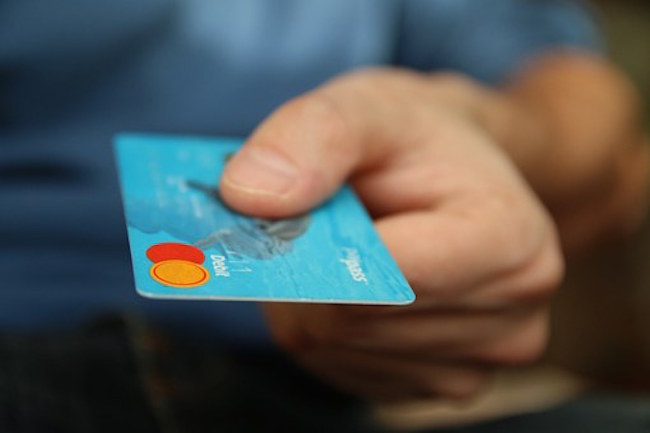How long does coronavirus last on surfaces? (And how to clean and disinfect surfaces properly) by: Zoey Sky for Natural News
As the Wuhan coronavirus (COVID-19) continues to spread across America, panic-stricken citizens are buying items left and right. Shoppers are hoarding food and cleaning supplies, but not all products can disinfect surfaces with coronavirus, revealed a study.
How long does coronavirus last on a surface?
A study published in the preprint database medRxiv on March 11 showed that coronavirus remains viable:
- In the air for up to three hours
- On copper for up to four hours
- On cardboard up to 24 hours
- On plastic and stainless steel for up to 72 hours
A revised version of the analysis was published on March 17 in The New England Journal of Medicine.
In a separate review published in The Journal of Hospital Infection, researchers looked at the scientific literature on human coronaviruses, except COVID-19, to understand how long these diseases can survive outside of the body.
The scientists inferred that if this new coronavirus resembles other human coronaviruses, like related viruses that cause severe acute respiratory syndrome (SARS) and Middle East respiratory syndrome (MERS), it can stay on surfaces like glass, plastic or metal for at least nine days.
Meanwhile, flu viruses only last on surfaces for around 48 hours.
Fortunately, some coronaviruses don’t remain active as long as temperatures higher than 86 F (30 C). The researchers added that these coronaviruses can be wiped away using household disinfectants.
Disinfect surfaces with coronavirus using cleaning products
Data from the JHI study revealed that disinfectants with 62 to 71 percent ethanol, 0.5 percent hydrogen peroxide or 0.1 percent sodium hypochlorite (bleach) can “efficiently” inactivate coronaviruses under a minute.
The scientists noted that these disinfectants could have “a similar effect against the 2019-nCoV.”
However, while the new coronavirus is a similar strain to the SARS coronavirus, experts have yet to determine if it will behave the same.
The Centers for Disease Control and Prevention (CDC) suggests that diluted household bleach solutions, alcohol solutions with at least 70 percent alcohol, and most EPA-registered common household disinfectants should be effective at disinfecting surfaces against the coronavirus.
To prepare the bleach solution, mix five tablespoons (or one-third cup) of bleach per gallon of water or four teaspoons of bleach per quart of water.
Don’t mix household bleach with ammonia or any other cleanser since combining common cleaners may create toxic fumes. Mixing bleach with an acidic solution results in a chemical reaction that produces chlorine gas, which may irritate the eyes, throat and nose.
At high concentrations, chlorine gas may cause breathing difficulties and fluid in the lungs. At very high concentrations, chlorine gas can even result in death.
Don’t forget to sanitize your phone
Smartphones are made of glass and metal, two materials that coronavirus can survive on. If you’re always on your phone, disinfect it at least once or twice a day.
In a 2012 study, researchers from the University of Arizona found that cellphones carry 10 times more bacteria than a toilet seat. But while toilet seats are regularly cleaned, not all users can say the same for their phones.
Wipe down hard, nonporous surfaces like a smartphone screen with disinfectant wipes or a 70 percent isopropyl alcohol wipe.
Just don’t submerge your phone in a cleaning product. Don’t get moisture near a phone’s charging port, and don’t use spray cleaners directly on your device.
How does coronavirus spread?
The CDC explains that you can get infected with coronavirus by touching a contaminated surface or object, then touching your own mouth, nose or eyes. But experts don’t think this is the main way that the virus spreads.
While the virus remains viable in the air, the new study was unable to verify if people can become infected by inhaling it in from the air.
It’s possible that the virus spreads from person to person through close contact or through respiratory droplets from coughs and sneezes that may land on someone else’s mouth or nose. (Related: Up to 86 percent of people walking around with the coronavirus don’t even know they have it (because they show no symptoms).)
If a family member is suspected or confirmed to have coronavirus, thoroughly clean and disinfect high-touch surfaces in common areas. These include doorknobs, light switches, remotes, handles, hard-backed chairs, desks, tables, toilets and sinks.
Make sure the patient stays in a specific room away from others as much as they can. If you’re taking care of a loved one with coronavirus, try to stay away from them as much as possible.
If the patient is well enough to do so, let them clean and disinfect surfaces themselves. If they’re not strong enough to move around, you must wait “as long as practical” after the patient uses the bathroom before you clean and disinfect surfaces.
Remain calm, follow the guidelines detailed above, and practice proper hygiene to protect your loved ones during the coronavirus pandemic.




